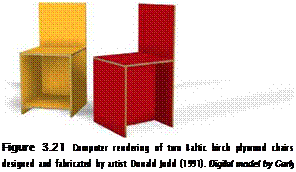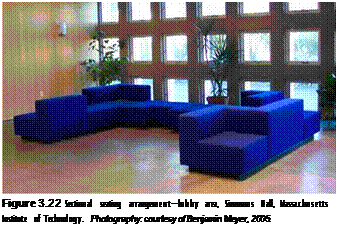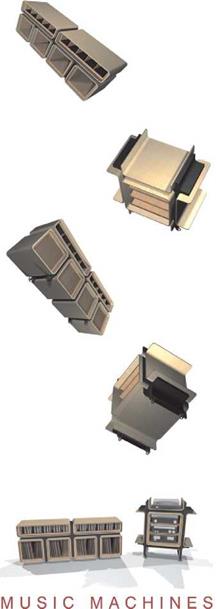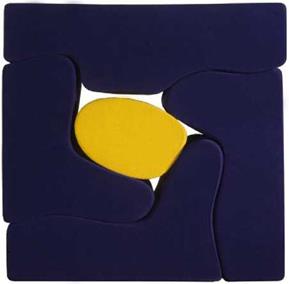Orthogonal furniture is composed of rectangular geometric forms created by lines, planes, and volumes positioned at 90 degrees to one another. Armoires, beds, buffets, shelving, and sofas are often orthogonal due to their size, cost of fabrication, and spatial proximity to a wall. Donald Judd’s precisely crafted Baltic birch plywood box chairs (1991), shown in Figure 3.21, complement his lifelong artistic exploration of light, form, and order, which nearly always is expressed through orthogonal geometry.
Sectional/Modular
The terms sectional and modular are often used interchangeably, but note their distinction. Sectional furnishings are arrangements of components that can be organized in various ways. The components need not be similar or even proportional to one another. Modular furnishings rely on proportional correlations between components, having repeatable or geometric correlations between their parts, which may be arranged in a variety of ways. Sectional and modular furnishings are inherently flexible, designed as a system of components that can be assembled, disassembled, and very often reconfigured (Figure 3.22). Shelving systems, office workstations, lounge seating, and storage units are generally sectional or modular.
 |
 |
Roberto Sebastian Antonio Matta Echaurren (1911-2002), better known as Roberto Matta was a painter from Chile who designed Malitte (1966-1968), a modular furniture piece
(Figures 3.23 and 3.24). Malitte is comprised of five individually upholstered components, each of polyurethane foam covered in fabric. The piece can be composed as a square shape (62 inches [157.5 cm] high, 64 inches [162.5 cm] wide, and 25 inches [63.5 cm] deep) or arranged as four seating components on the floor with a central oval piece that functions as a stool or table.
Music Machines is an ensemble of four furniture pieces designed to organize a variety of components and media (Figures 3.25 and 3.26). Two custom-fabricated speakers, a storage unit for records and CDs, and another unit that organizes stereo components were designed as an ensemble, interconnected and interrelated with one another. The pieces were fabricated of 1/8-inch-thick laminated birch plies, cherry hardwood, and neoprene 70. The storage and display units incorporate wheeled casters. The design utilizes modular components, internally arranged and externally expressing parts of a larger whole.
![]()
|
|
|
|
|
|
Figure 3.26 Music Machines—furniture for organizing records and CDs. Photography by Jim Postell, 2002.






